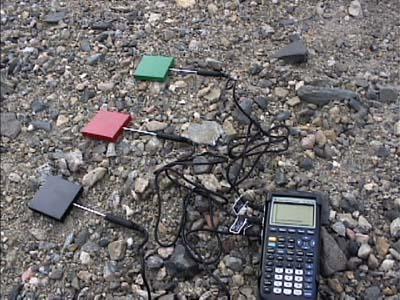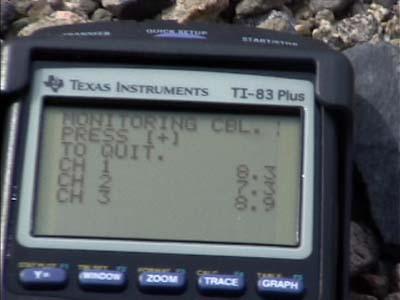
|
|
24 January, 2001
Early in the spring of 2000, I was invited to attend the TEA orientation at
the NSF building just outside of Washington DC, to learn what my actual
role and responsibilities would be, and how the TEA program runs. It was
early spring in Washington and the air was filled with the sweet smell of
blossoming flowers, smells that were still months away in frozen northern
New England. Back home it was mud season. The only time of the year
where you envy your neighbor with the six inch lift kit and no exhaust on
their Honda prelude.
On the flight back home, I spent some time trying to come up with ways to
involve my students in the Antarctic experience. I hoped to figure out a
way to make it OUR Antarctic experience. The rest of the time was spent
trying to figure out lunch.
As a chemistry teacher, I have tried many different ways to get young
people involved and interested in learning. While not everything works, I
still struggle with quantum mechanics, I have found some common techniques.
People are more interested and involved in a project if they have personal
investment or interest. While this seems to be common sense, think of the
money that was spent on my college education to discover this. My father
does.
One of my solutions for involving students in the Antarctica experience was
to have them design an experiment that I would take with me. Working with
the physics teacher, Carl Mehrbach, we decided to have his students design
experiments around the topic of heat transfer. For those of you who have
been away from physics for awhile, this topic involves the following three
methods: conduction, convection and radiation. The students were
presented a problem, they designed an experiment to answer this question
and spent two days working out the procedure and equipment needed. In the
end one of the experiments was selected and a duplicate set of the
experimental equipment was assembled. One set of the equipment was to
remain at school and the other was to be taken with me to Antarctica.
In the end the experiment I brought with me was three aluminum blocks that
each have a hole drilled in them the size of the temperature probe. Also
each block is painted a different color: red, green and black. Other
equipment I brought was a Texas Instrument TI-83 calculator, a Vernier Lab
Pro and three temperature probes.
The equipment used in high school science classes has really changed in the
last 5 years. I attribute this change to a growth in the technology
industry and a new generation of students who have grown up with this
technology. The Vernier Lab Pro is an interface between the calculator
and the temperature probes. Using a program designed for the TI
calculator, I can tell the interface what probe I am using, calibrate my
probes and then set how and what type of data to collect.
This paragraph is going to be somewhat nerdy, I apologize, let's sit back
and discuss light. White light, like from the sun, is composed of all
colors. The individual components of white light can be seen whenever
sunlight passes through a raindrop, the result is a rainbow or ROYGBIV
(red, orange, yellow, green, blue indigo and violet). Additionally,
different colors absorb different parts of the electromagnetic spectrum.
The colors that we see are what is reflected not absorbed by the material.
For example a red block would absorb all the colors except red, red light
is reflected back. White objects reflect all light and black objects
absorb all light. The last piece to this story is that light is also
energy. Red, yellow and orange colors contain less energy than the darker
colors. That is why black colors are best avoided on blue sky perfect,
95 degree summer days. Unless you are testing your deodorant.
The students' experiment is simply to place a set of the blocks outside in
the dry valley and a set outside in Hanover, New Hampshire. Then a
comparison could be made between the amounts of energy each block absorbs.
Would the results be different due to the fact that the southern hemisphere
is tilted towards the sun, giving us summer here while the northern
hemisphere is experiencing winter? Would the ozone hole play a factor
since all forms of the electromagnetic spectrum, not just color, would be
penetrating? In the north the ozone is filtering out parts of the
electromagnetic spectrum. Is Elvis alive and living here at the south
pole...

The experimental set-up

The experimental results. The aluminum blocks and how they were connected to the temperature probes are: channel 1 is the green block, channel 2 is the red and channel 3 is the black.
Contact the TEA in the field at
.
If you cannot connect through your browser, copy the
TEA's e-mail address in the "To:" line of
your favorite e-mail package.
|
